In today’s increasingly connected world, real-time indoor navigation is no longer a nice-to-have—it’s becoming a critical part of the user experience in hospitals, airports, shopping malls, factories, corporate campuses, and large event venues. Powered by Real-Time Location Systems (RTLS), indoor wayfinding solutions are transforming how people navigate complex spaces by offering real-time location awareness, guided pathways, and customizable maps.
In this guide, we explore the technologies behind indoor navigation solutions, their business applications, and the benefits they offer to both users and operators.
Indoor wayfinding refers to the process of navigating and directing users through complex environments within large buildings. Unlike GPS, which struggles indoors, indoor wayfinding relies on RTLS to deliver accurate, real-time location data and directional guidance.
By merging digital indoor maps with RTLS technologies such as Bluetooth® Low Energy (BLE), Wi-Fi, UWB, and RFID, wayfinding platforms enable visitors to find points of interest, receive turn-by-turn instructions, and even learn about their surroundings—all from their smartphones or fixed kiosks.

RTLS serves as the backbone for indoor navigation by continuously tracking the location of users or assets within a defined space. The system typically connects location-sensing tags or devices to anchors, readers, or beacons installed across the environment. Software then processes this data to display user positions on an indoor map in real time.
Various RTLS positioning methods used in indoor wayfinding include:
For a detailed overview of these technologies, visit our RTLS Positioning Methods Guide
Here are some commonly used RTLS and location-based technologies in wayfinding apps:
Most modern systems use hybrid approaches to improve accuracy, coverage, and cost-efficiency. (See our page on RTLS principles for more details.)
Improved Visitor Satisfaction and Confidence: Real-time indoor guidance transforms a frustrating search into a smooth experience, making visitors feel in control of their journey. For example, when guests arrive at a hospital or airport, wayfinding apps provide instant reassurance by showing them exactly where to go and how long it will take. This clarity dramatically reduces anxiety and prevents delays – patients are more relaxed and tourists more eager to shop. In measurable terms, organizations often see higher satisfaction scores and fewer complaints. By eliminating confusion, wayfinding technology builds confidence, encouraging repeat visits and boosting the reputation of the venue or brand.
Optimized Space Utilization and Facility Management: When organizations can see how people actually move through a building, they can manage space far more effectively. Indoor wayfinding platforms collect data on foot traffic patterns and room usage, revealing underutilized zones or bottleneck areas. For instance, a corporate office can discover that certain meeting rooms are rarely booked and adjust layouts accordingly, or an airport can reassign gates to optimize passenger flows. This data-driven insight leads to smarter facility decisions and eliminates wasted space. Ultimately, it translates into cost savings by right-sizing real estate needs and improving maintenance scheduling, ensuring the facility operates at peak efficiency.
Increased Staff Productivity by Minimizing Lost Time: Indoor wayfinding drastically reduces the wasted time employees and staff spend on non-core tasks. Instead of having security guards or front-desk personnel guide people with verbal directions, or service staff searching for the right department, a quick app search delivers the needed directions instantly. For example, maintenance teams can navigate directly to equipment rooms, and nurses can find supply closets faster. By cutting down on these interruptions, staff can focus on their primary responsibilities. This boost in efficiency not only cuts labor costs (less overtime or fewer support staff needed) but also speeds up business processes, directly improving the bottom line.
Enhanced Safety and Security:Real-time location data strengthens safety and security measures across any venue. In an emergency, wayfinding systems can guide occupants away from hazards by highlighting the closest safe exit on their device. Security personnel use the same system to monitor crowd flow and dispatch help where needed. For example, at large events, organizers can quickly see if crowds are building in one area and use the app to direct people to alternate routes. Beyond crises, managers can set up geofences to alert if someone enters a restricted zone. These capabilities reduce risk, ensure compliance with evacuation protocols, and protect assets – all of which safeguard the organization’s reputation and financial exposure.
Access to Valuable Location Analytics for Operators: An indoor wayfinding solution does double duty by serving as an analytics engine. Every user interaction – from search queries to path selections – becomes data that operators can analyze. Retail and facilities managers review heat maps of popular routes, dwell times at exhibits, or queue lengths at customer service. With this information, they can make targeted improvements: rearrange shop layouts, optimize signage placement, or tailor staffing levels. In effect, wayfinding turns user movements into actionable business intelligence. By making informed decisions based on real visitor behavior, organizations get higher ROI from their spaces and marketing efforts.
Cost Savings on Printed Directories and Staff Assistance: Traditional wayfinding relied on static signs and staff at information desks, which carry ongoing costs. By contrast, digital indoor navigation cuts those expenses significantly. Fewer printed maps and signs need design and replacements when layouts change – one software update covers them all. Likewise, employees are freed from repeatedly giving directions to confused visitors, saving thousands of labor hours over time. These savings accumulate quickly: organizations spend less on materials and can redeploy or trim assistance staff, making the investment in RTLS wayfinding pay for itself. The result is a leaner operational model without sacrificing guest service.
Location-Based Marketing and Engagement: Indoor wayfinding also opens up new marketing opportunities by integrating location-based notifications and promotions. As a user moves through a space, the system can deliver relevant offers or information – for example, alerting a shopper to a sale at a nearby store or a visitor to an upcoming exhibit event in the building. This hyper-targeted engagement not only enhances the user experience with timely convenience, but also drives additional revenue. Retailers and venue hosts report higher conversion when promotions reach customers in the right place at the right time. In short, wayfinding becomes a dual-purpose tool: guiding visitors and generating measurable business value through integrated marketing efforts.
At a busy city hospital, RTLS-powered wayfinding transforms the patient experience by guiding visitors through complex corridors with ease. For example, patients arriving for appointments can follow turn-by-turn indoor directions on a smartphone or kiosk, finding their exam room or lab without delay. This clarity reduces missed appointments and late arrivals, meaning staff spend less time rebooking patients or giving directions, and more on care. By smoothing flows in waiting areas and easing family transitions, hospitals see improved satisfaction scores and operational throughput. Ultimately, fewer people wandering lost in hallways translates to better time management, cost savings, and a calmer, more efficient healing environment.
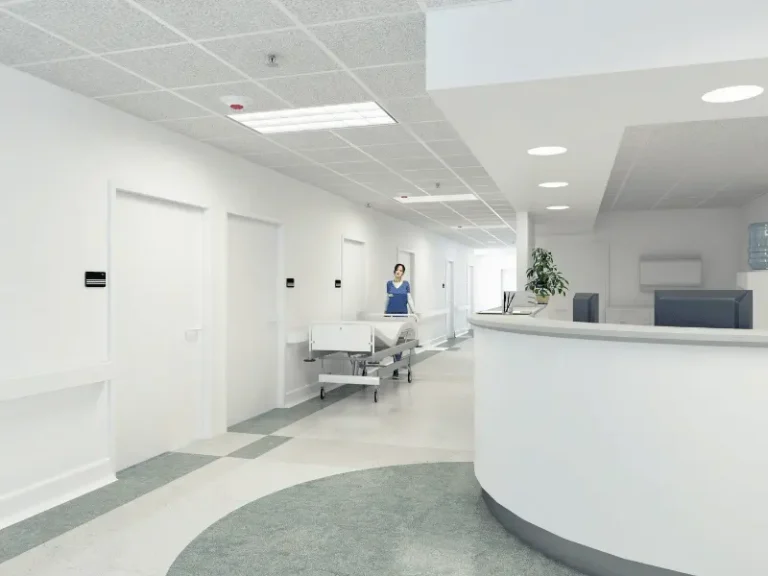
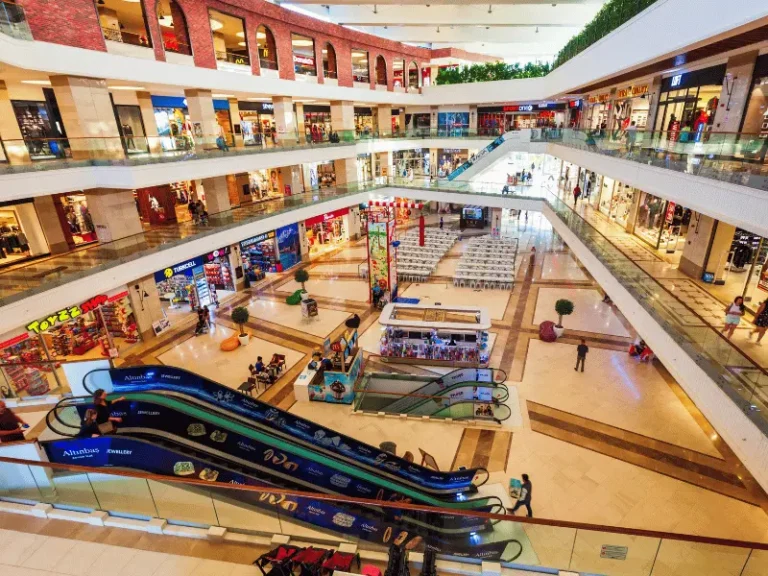
In retail malls and hospitality venues, indoor navigation apps act like a personal guide for shoppers and guests. Customers can pull up a digital map on their phone and instantly see which floor and corridor a particular store, restroom or café is located in, with clear arrows directing them there. Hotels can similarly use wayfinding to help guests find conference rooms, spa facilities or baggage claim. These guided routes reduce customer frustration, encouraging patrons to explore more areas and stay longer. As a result, stores experience higher foot traffic and sales, and hospitality managers gain operational efficiency by cutting down on desk inquiries and printed signboards – boosting revenue and guest satisfaction simultaneously.
Travelers in airports and transit hubs benefit greatly from indoor wayfinding, which turns sprawling terminals into easy-to-navigate environments. An app or interactive kiosk can guide a passenger from the check-in counter all the way to the correct gate, even adjusting for real-time changes like gate swaps. Baggage claim areas, lounges and transfer corridors are all pinpointed on indoor maps, ensuring visitors never lose time. Airlines and airport operators see concrete gains: fewer missed flights or delayed connections due to confusion, smoother passenger flows, and reduced queueing at information desks. The optimized traffic flow also helps retailers and concessions capture more business as travelers explore nearby shops with confidence.
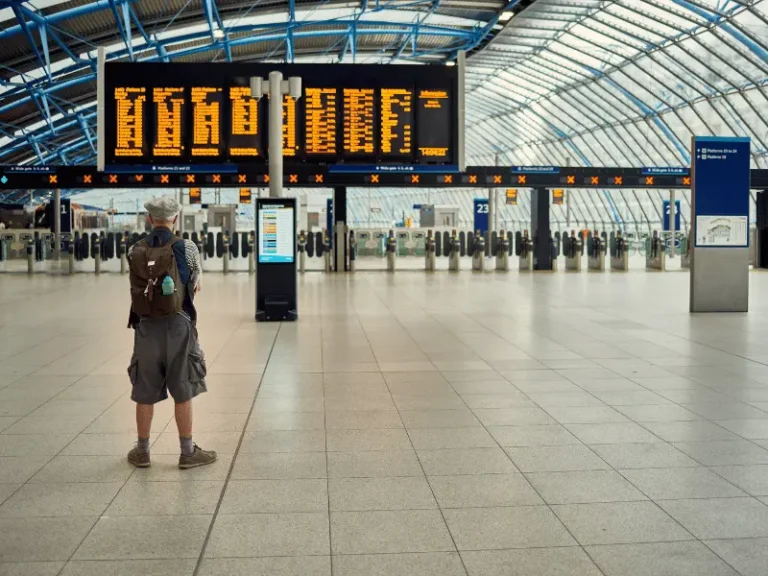
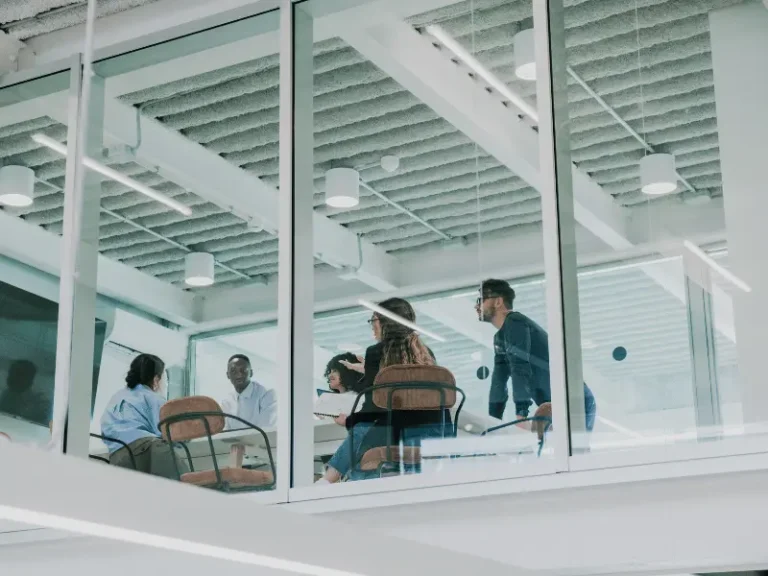
On large corporate campuses, indoor wayfinding is a game-changer for new hires and visitors navigating multiple floors or buildings. For instance, an employee who wants to locate a colleague’s desk or book an available meeting room can use an interactive office map to do so in seconds, without roaming around and interrupting busy staff. Maintenance or delivery teams quickly find service panels or inventory rooms without unnecessary delays. By minimizing the dozens of minutes lost each day searching for people or places, companies dramatically increase staff productivity. They also gain insights on how different floors or zones are used, enabling facility managers to optimize desk layouts and conference room scheduling to maximize ROI on office space.
Indoor wayfinding shines at large venues and events where crowds can otherwise get overwhelmed. In a convention center or sports stadium, visitors can follow a digital map from a major landmark (like an entrance or concession stand) to their seat or a specific booth. When navigating between multiple halls or finding the nearest restroom or exit in a packed venue, guests appreciate the real-time guidance. Event organizers benefit from this by improving crowd management and showcasing sponsorships or promotions through the same system. The result is a smoother attendee experience: reduced congestion in busy zones, higher satisfaction ratings, and even incremental revenue from targeted event promotions delivered to patrons as they move through the facility.
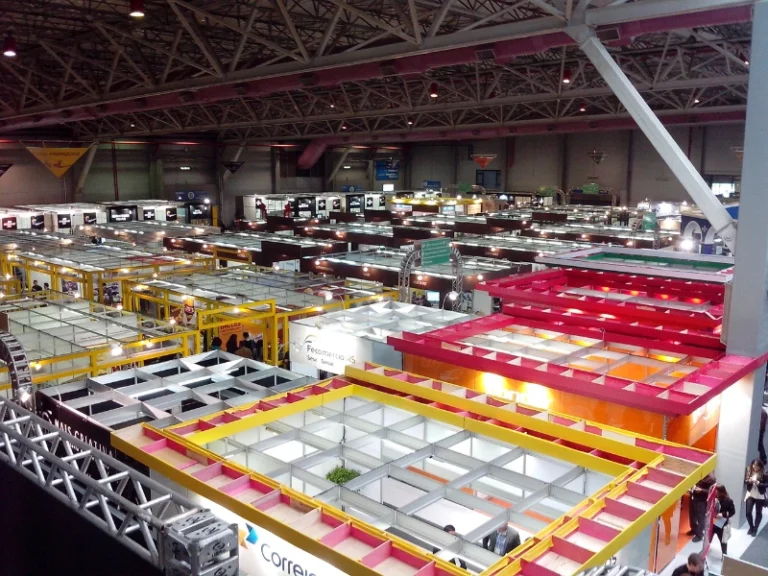
Implementing indoor wayfinding requires accurate floor plans, reliable infrastructure, and ongoing system maintenance. Challenges may include:
Despite these considerations, plug-and-play RTLS solutions are reducing complexity and accelerating deployments. Read our article to discover the key advantages of using plug-and-play RTLS.
Indoor navigation, powered by RTLS, is more than a convenience—it’s rapidly becoming a strategic asset for forward-thinking organizations. From guiding patients in hospitals to improving traveler flow in airports or enhancing customer engagement in shopping malls, the ability to deliver accurate, real-time location guidance is reshaping how people interact with built environments.
As digital expectations rise and physical spaces grow more complex, indoor wayfinding systems offer a scalable, cost-effective solution to improve efficiency, safety, and satisfaction. They empower businesses with actionable insights, reduce operational overhead, and create more inclusive environments for everyone—regardless of familiarity, language, or mobility needs.
While implementation may come with challenges—like hardware deployment and floor plan integration—today’s RTLS solutions have evolved to be more modular, user-friendly, and interoperable than ever before. With the right strategy, even legacy buildings can transform into smart, navigable spaces that feel intuitive and connected.
The future of indoor spaces is seamless, intelligent, and interactive. By investing in RTLS-based indoor navigation today, you’re not just adopting new technology—you’re designing a better experience for everyone who walks through your doors.
📍 We’re expanding our horizons! Stay tuned for upcoming product and service launches.📍
©2024 anyRTLS, All rights reserved.